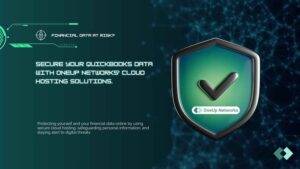QuickBooks is the go-to accounting software for millions of businesses, offering both QuickBooks Online (QBO) and QuickBooks Desktop (QBD) to meet diverse needs. While QBO is perfect for cloud-based flexibility, QBD is often preferred for its advanced features, offline access, and industry-specific tools. If you’re an accountant, CPA, or business owner considering moving data from QuickBooks Online to QuickBooks Desktop, this guide will walk you through the process, highlight what can’t be transferred, and provide tips for a seamless transition.
Why Move Data from QuickBooks Online to QuickBooks Desktop?
Many businesses and accounting professionals choose to migrate from QBO to QBD for several reasons:
- Advanced Reporting: QuickBooks Desktop offers more robust reporting options, including customizable reports and industry-specific templates.
- Offline Access: For businesses with unreliable internet or those who prefer working offline, QBD is a reliable solution.
- Cost Efficiency: Depending on your business size and needs, QuickBooks Desktop can be more cost-effective in the long run.
- Enhanced Features: Features like batch invoicing, advanced inventory tracking, and more granular user permissions make QBD a powerhouse for growing businesses.
How Data Moves from QBO to QBD?
Transferring data from QBO to QBD is a straightforward process, but it requires careful planning to ensure accuracy. Here’s a step-by-step guide:
Step 1: Prepare Your QuickBooks Online Data
Before exporting, ensure your QBO data is clean and up-to-date:
- Reconcile all accounts.
- Review transactions for accuracy.
- Resolve any discrepancies or errors.
Step 2: Export Data from QuickBooks Online
- Log in to your QuickBooks Online account.
- Go to the Gear Icon > Export Data.
- Select the date range for the data you want to export.
- Choose the
.QBOfile format (compatible with QuickBooks Desktop). - Download the file to your computer.
Step 3: Import Data into QuickBooks Desktop
- Open QuickBooks Desktop on your computer.
- Navigate to File > Utilities > Import > Web Data.
- Select the
.QBOfile you downloaded from QBO. - Follow the on-screen prompts to complete the import.
Step 4: Review and Reconcile Data
After importing, carefully review your data in QuickBooks Desktop:
- Reconcile accounts to ensure balances match.
- Verify that transactions, customer/vendor lists, and other critical data transferred correctly.
What Cannot Move from QuickBooks Online to QuickBooks Desktop?
While most data transfers smoothly, there are some limitations. According to Intuit’s official guidelines, the following items cannot be moved from QBO to QBD:
- Sales Tax Payments and Adjustments: Any sales tax payments or adjustments made in QuickBooks Online will not transfer to QuickBooks Desktop. You’ll need to re-enter these manually.
- Budgets: Budgets created in QBO will not carry over to QBD.
- Recurring Transactions: Recurring transactions, such as invoices or bills, will not transfer.
- Attachments and Documents: Files attached to transactions in QBO will not move to QBD.
- Payroll Data: If you use QuickBooks Online Payroll, this data will not transfer to QuickBooks Desktop.
- Custom Fields: Custom fields created in QBO may not transfer correctly.
- Online Banking Transactions: Bank feeds and online banking transactions will need to be reconnected in QBD.
For a full list of limitations, refer to Intuit’s official guide here.
Tips for a Smooth Transition:
- Back Up Your Data: Always create a backup of your QuickBooks Online data before starting the transfer process.
- Test the Import: Before transferring all your data, test the process with a small data set to ensure compatibility.
- Plan for Manual Adjustments: Be prepared to manually re-enter certain data, such as sales tax payments, budgets, and recurring transactions.
- Consult a ProAdvisor: If you’re unsure about the process, consider working with a QuickBooks ProAdvisor to ensure accuracy.
- Update Your Workflow: QuickBooks Desktop operates differently from QBO. Take time to familiarize yourself with the new interface and features.
FAQs
1. Can I move data from QuickBooks Online to QuickBooks Desktop for free?
Yes, the export and import process is free. However, you may need to purchase QuickBooks Desktop if you don’t already own it.
2. Will my historical data transfer to QuickBooks Desktop?
Yes, historical data such as transactions, customer/vendor lists, and account balances will transfer, but some items like budgets and recurring transactions will not.
3. Can I transfer payroll data from QBO to QBD?
No, payroll data from QuickBooks Online Payroll will not transfer to QuickBooks Desktop. You’ll need to set up payroll separately in QBD.
4. What happens to my sales tax data during the transfer?
Sales tax rates and settings will transfer, but sales tax payments and adjustments will not. You’ll need to re-enter these manually.
5. Can I switch back to QuickBooks Online after moving to Desktop?
Yes, but the process of moving data back to QBO is not as straightforward. You may need to use third-party tools or manually re-enter data.
Moving data from QuickBooks Online to QuickBooks Desktop Enterprise can unlock powerful features and better align with your business or accounting needs. While the process is generally smooth, it’s important to understand the limitations and prepare for manual adjustments, especially for items like sales tax payments, budgets, and recurring transactions.
By following the steps outlined above and keeping the tips in mind, you can ensure a seamless transition. Whether you’re an accountant, CPA, or business owner, QuickBooks Desktop offers a robust solution for managing your finances with precision and control and integrating it with cloud makes it more advanced solution as QuickBooks Hosting.
If you have further questions or need assistance, don’t hesitate to reach out to Intuit’s support team or OneUp Networks. Happy accounting!












